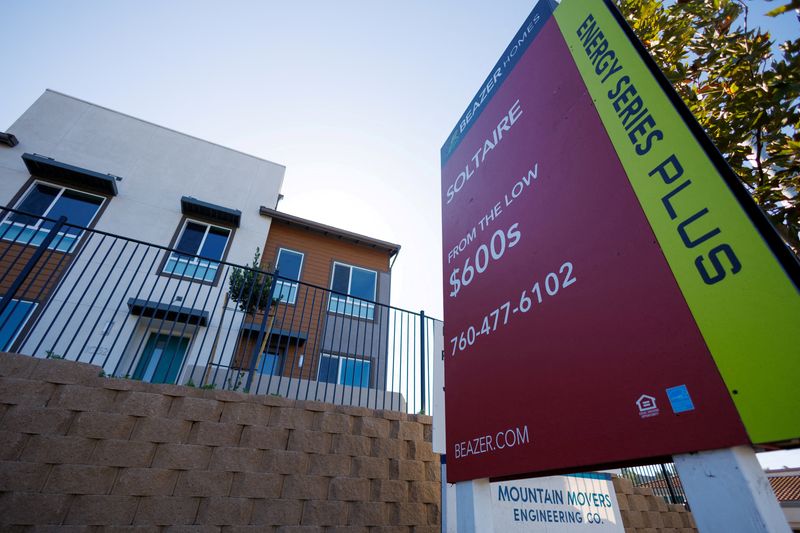The interest rate for the most sought-after home loan in the U.S. took a nosedive last week, reaching its lowest point in 15 months. This unexpected drop came on the heels of the Federal Reserve signaling that it might slash its policy rate as early as September. Add to that a cooling job market, and financial markets are now buzzing with the hope that borrowing costs could see substantial reductions.
As of the week ending August 2, the average contract rate for a 30-year fixed-rate mortgage tumbled by 27 basis points, landing at 6.55%, according to the Mortgage Bankers Association (MBA). This marks the lowest rate since May 2023 and the most significant drop in two years—just the kind of breather potential homebuyers have been desperately waiting for in a housing market that has grown increasingly out of reach.
Yet, the relief is bittersweet. On the very same day, Fannie Mae’s July housing sentiment index painted a bleak picture: only 17% of respondents felt it was a good time to buy a home, a drop from 19% in June. Even more telling, a staggering 35% of those surveyed said they’d opt to rent their next home instead of buying—a level of caution we haven’t seen since 2011.
Doug Duncan, Fannie Mae’s chief economist, summed up the sentiment with a mix of concern and curiosity: “Right now, it’s tough to say whether this is just buyer fatigue or something deeper, but if this trend sticks, it could have serious implications.”
A Refinancing Frenzy
The dip in mortgage rates has sparked a refinancing wave, as homeowners who bought when rates were higher now have the chance to lower their payments. The MBA reported a sharp rise in refinancing applications, the highest in two years, pushing the refinance share of overall loan applications to 41.7%—the most since the Fed’s first rate hike in March 2022.
But when it comes to buying homes, the market remains tepid, with purchase activity inching up by less than 1%. A severe lack of available homes continues to drive prices higher, despite the lower interest rates.
The Fed’s aggressive campaign to combat inflation through rate hikes in 2022 and 2023 pushed borrowing costs to decades-high levels. But last week, the central bank hinted that a policy rate cut might be in the cards as soon as next month, given the slowing inflation and softening labor market. The U.S. central bank has kept its policy rate in the 5.25%-5.50% range for over a year now.
Just two days after the Fed’s last meeting, the Labor Department’s monthly jobs report sent shockwaves through the market. The U.S. unemployment rate spiked to 4.3% in July, and hiring slowed down significantly, stoking fears that a recession could be just around the corner, or perhaps already here.
The jitters sent equity markets into a tailspin, with reverberations felt across global markets. Stocks began to recover by Tuesday, and by Wednesday, major U.S. indices were trading higher again.
Last week’s jobs data also ignited a rally in U.S. Treasuries, driving yields lower. Since mortgage rates closely follow these yields, the decline in Treasury yields brought mortgage rates down with them—a silver lining for millions of Americans in the market for a new home, cheaper housing, or both.
Rate Cuts on the Horizon
While the Fed kept rates steady at its July meeting, the post-meeting statement suggested a subtle yet significant shift in focus. The central bank is now just as concerned with the health of the labor market as it is with taming inflation.
This change in tone has already started to ripple through the mortgage market. San Francisco Fed President Mary Daly noted on Monday that the anticipation of the Fed’s next move is already lowering mortgage rates. “You can see the policy at work even before we cut the rate,” she remarked.
Futures markets are now betting that the Fed will cut its policy rate by a full percentage point by year’s end, starting with a half-point reduction next month.
But there’s a catch: more than 4 million mortgages issued since 2022 carry interest rates of 6.5% or higher, according to data from Intercontinental Exchange’s ICE Mortgage Monitor. Meanwhile, over 60% of mortgages have rates below 4%, thanks to earlier periods of lower borrowing costs. This means that for many homeowners, mortgage rates would need to drop significantly further before refinancing makes sense—or before they consider selling their current homes to buy new ones.

